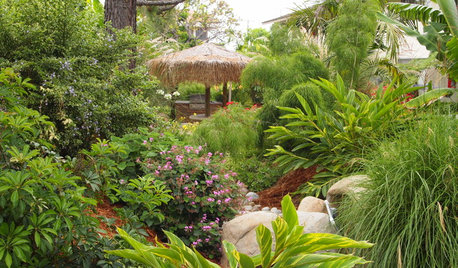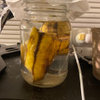I recently saw some musa basjoos at a local store. They're pretty big, and there's about five stems per container (I don't know if these are multiple plants or a single corm with pups). I'm kinda thinking about getting them but I'm wondering whether mulching over or digging up and storing would be the best overwintering option.
From my understanding, if you want to mulch over them, the corm needs to be large and well established. I heard that the plant needs to get at least 4 feet tall if you want this to happen, as I guess that height indicates that the corm is... well developed enough to survive.
As for digging them up, which seems like a more viable option, it sounds like you can keep some of the pseudostem and the last unfurled leaf on the plant. Would these need any additional protection, or would storing them in a cold, dark, dry place, like a garage or something, be enough?
Also, can these be grown indoors at all, assuming they can get enough light? If grown indoors, how fast would the grow, and could they be replanted when the weather got nice without stressing them out?
Also, how much light and water do they require when they're growing? Plantfiles said they need to be kept consistently wet, but how much water would be *too* much during active growth?









xerophyte NYC
amccourOriginal Author
Related Professionals
Sand Springs Landscape Architects & Landscape Designers · Southfield Landscape Architects & Landscape Designers · Bound Brook Landscape Contractors · Cerritos Landscape Contractors · Framingham Landscape Contractors · Gurnee Landscape Contractors · Kaysville Landscape Contractors · Vineyard Landscape Contractors · Boise Roofing & Gutters · Franklin Roofing & Gutters · Greenville Roofing & Gutters · Portage Roofing & Gutters · Burlington Roofing & Gutters · Hacienda Heights Roofing & Gutters · Weehawken Roofing & Guttersglen3a
amccourOriginal Author